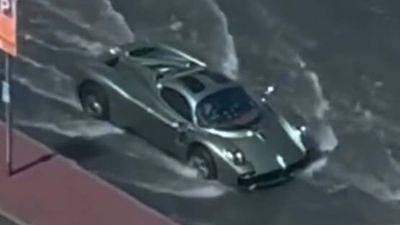A Ghost Ship’s Doomed Journey Through the Gate of Tears
The ballistic missile hit the Rubymar on the evening of February 18. For months, the cargo ship had been shuttling around the Arabian Sea, uneventfully calling at local ports. But now, taking on water in the bottleneck of the Bab-el-Mandeb Strait, its two dozen crew issued an urgent call for help and prepared to abandon ship.
Over the next two weeks—while the crew were ashore—the “ghost ship” took on a life of its own. Carried by currents and pushed along by the wind, the 171-meter-long, 27-meter-wide Rubymar drifted approximately 30 nautical miles north, where it finally sank—becoming the most high-profile wreckage during a months-long barrage of missiles and drones launched by Iranian-backed Houthi rebels in Yemen. The attacks have upended global shipping.
But the Rubymar wasn’t the only casualty. During its final journey, three internet cables laid on the seafloor in the Bab-el-Mandeb Strait were damaged. The drop in connectivity impacted millions of people, from nearby East Africa to thousands of miles away in Vietnam. It’s believed the ship’s trailing anchor may have broken the cables while it drifted. The Rubymar also took 21,000 metric tons of fertilizer to its watery grave—a potential environmental disaster in waiting.
An analysis from WIRED—based on satellite imagery, interviews with maritime experts, and new internet connectivity data showing the cables went offline within minutes of each other—tracks the last movements of the doomed ship. While our analysis cannot definitively show that the anchor caused the damage to the crucial internet cables—that can only be determined by an upcoming repair mission—multiple experts conclude it is the most likely scenario.
The damage to the internet cables comes when the security of subsea infrastructure—including internet cables and energy pipelines—has catapulted up countries’ priorities. Politicians have become increasingly concerned about the critical infrastructure since the start of the Russia-Ukraine war in February 2022 and a subsequent string of potential sabotage, including the Nord Stream pipeline explosions. As Houthi weapons keep hitting ships in the Red Sea region, there are worries the Rubymar may







